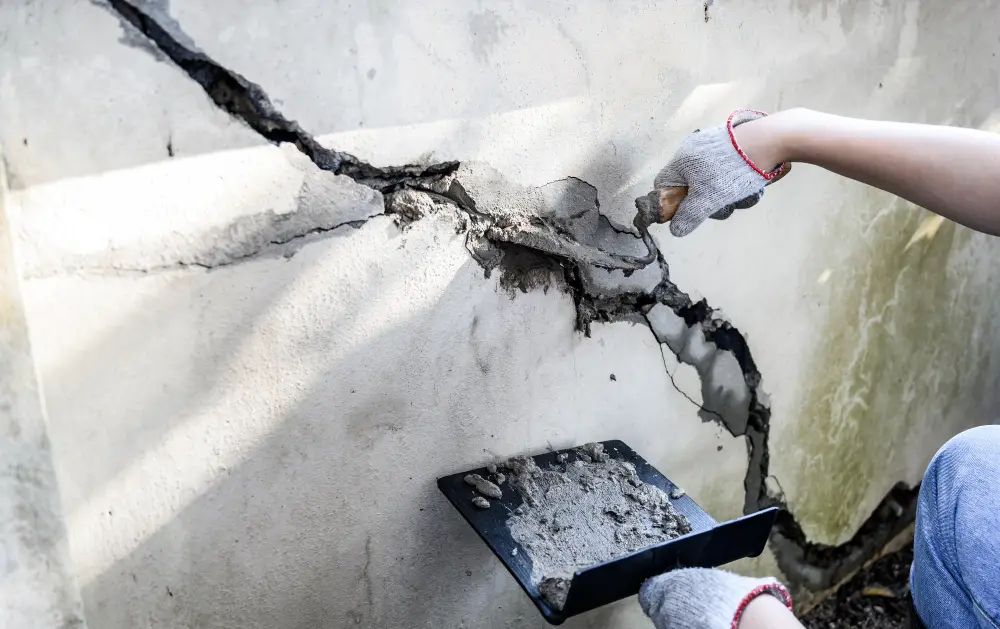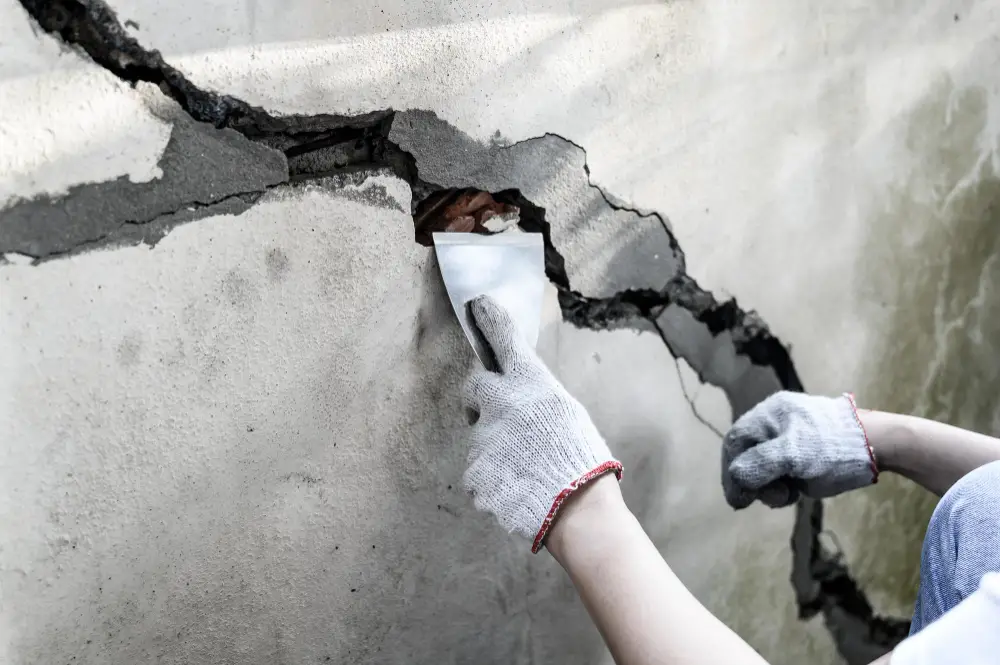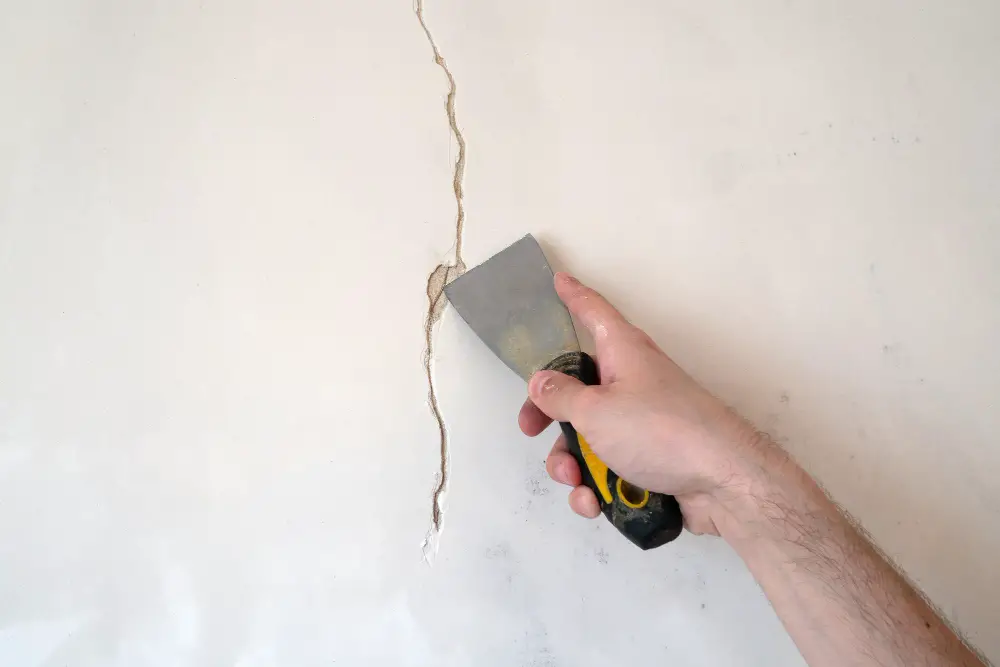Last updated on
Discover step-by-step methods to fix wide and narrow concrete cracks effectively. Our comprehensive guide explains the process for durable, long-lasting repairs.
Homeowners and contractors undertaking concreting frequently encounter the common issue of cracks in concrete surfaces.
Addressing these cracks promptly can prevent further damage and maintain the integrity of the structure. This guide will delve into how to repair wide and narrow concrete cracks effectively for long-lasting results.
What's Inside
Understanding the Basics of Concrete Repair

According to these folks that do concreting in Melbourne, cracks in concrete can vary in size and require different materials and techniques for repairs. For wider cracks, a concrete patching compound is usually the best choice.
This mixture, akin to grout in texture, is typically mixed with water. Then, it can be applied with a trowel.
Conversely, smaller cracks, under 1/4 inch wide, can be filled with a concrete caulk or liquid filler. Despite its effectiveness, remember that the patch’s colour might contrast with the old concrete, looking like fresh concrete. If you want to hide the patch entirely, consider using an appropriate concrete paint.
Tip: Ensure to follow all the instructions provided by the manufacturer of your chosen patching compound. Different products may require specific steps or conditions for optimal use.
A Step-by-Step Process to Repair Wide Concrete Cracks

When dealing with larger cracks, the key to a successful repair is creating an inverted “V” shape. You simply need to undercut the sides of the crack.
This helps the repair material “key” into the crack, ensuring a secure mechanical and chemical bond between the patch material and the concrete. Follow these steps for a reliable repair:
Preparing the Crack
- Chisel the Crack: Use a hammer and masonry chisel, widen the base of the crack and make sure to remove any loose material from the old concrete.
- Clean the Crack: Utilise a wire brush to eliminate all debris from the crack. If necessary, use a pressure washer or a garden hose with a spray nozzle for a thorough clean.
- Remove Water and Debris: Employ a wet/dry shop vacuum or a brush to rid the crack of all dust and grit. Ensure no pools of water remain, although damp surfaces are acceptable.
Applying the Patching Compound
- Mix the Patching Compound: Follow the manufacturer’s instructions to prepare the compound.
- Trowel the Compound: Apply the compound into the crack, using the trowel to remove air pockets and push the material deep into the crack. Fill the crack until it’s level with the surrounding concrete surface.
- Smooth the Surface: Feather the compound into the surrounding concrete to create a smooth transition.
- Texture the Surface: If desired, use a dry paintbrush to texture the surface of the patching compound.
- Cure the Compound: Allow the compound to cure as per the manufacturer’s instructions.
- Paint or Seal the Surface: Optionally, you can paint or seal the surface of the patch and the surface of the surrounding area for a uniform appearance.
Fixing Thin Concrete Cracks: Comprehensive Steps

Thin cracks in concrete can be addressed using an elastomeric filler specifically designed for masonry cracks, applied with a caulking gun. Some variants are available in bottles equipped with an applicator tip.
For very fine cracks, like hairline cracks, you can apply a vinyl concrete patching compound over the crack and then evened out with a trowel or putty knife.
It’s important to note that such cracks can be quite deep, possibly extending throughout the whole depth of the concrete slab. As a best practice, start the repair process by inserting a foam backer rod into the crack. This acts as a base for the repair material.
Choose a rod with a diameter slightly greater than the crack width. Using a screwdriver, push the backer rod into the crack to a depth of 1/4 inch, then fill up the crack with the repair material, adhering to the manufacturer’s guidelines.
FAQs on Concrete Crack Repair

Can Cracked Concrete be Fixed?
Yes, smaller cracks can be repaired with a concrete caulk or liquid filler. For larger cracks, a patching compound works best.
How Long Does Concrete Crack Repair Last?
When done correctly, crack sealing can last for eight to ten years, making it a reliable treatment option.
Can I Pour Cement on Top of Cement?
Pouring fresh cement over existing cement can pose challenges as cement lacks natural bonding agents. This makes it difficult for the newly poured cement to bond effectively with the existing cement.




